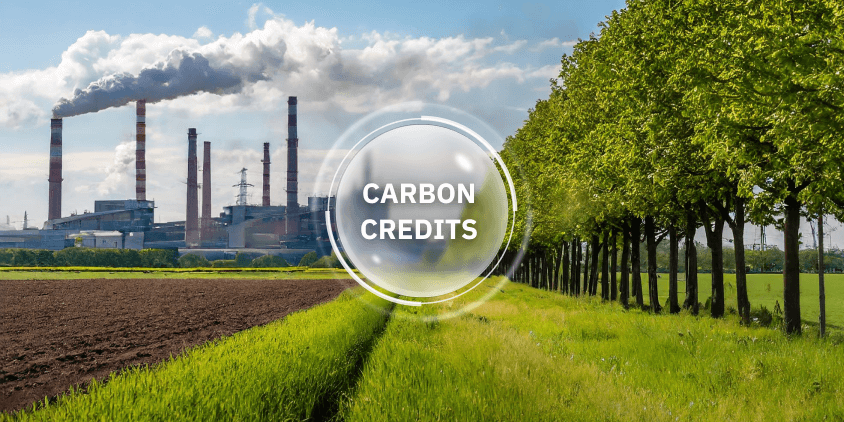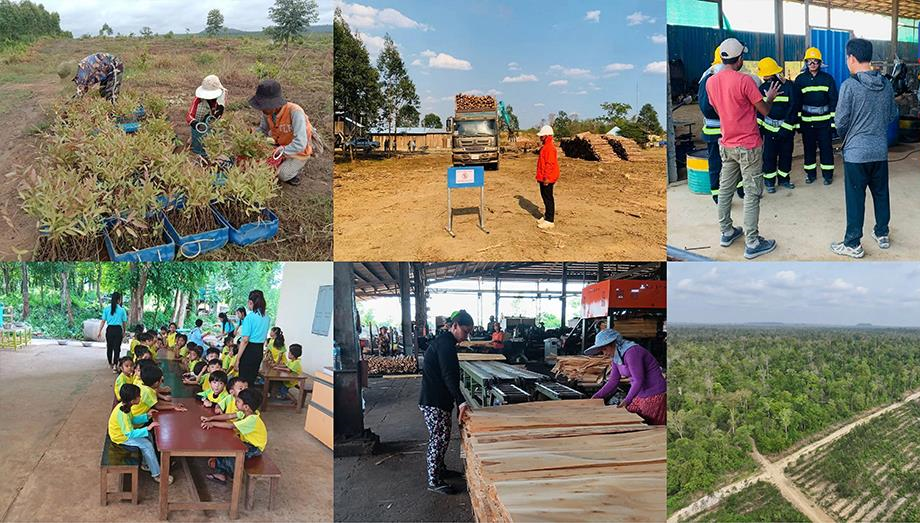Carbon credits have become a critical tool in the global fight against climate change, offering a market-based approach to reducing greenhouse gas emissions. These credits provide economic incentives for achieving reductions in pollutants and present significant opportunities for countries like Cambodia to drive sustainable development. This article explores the concept of carbon credits, their operation, and how Cambodia can leverage their potential for environmental and economic benefits.
What are Carbon Credits?
Carbon credits are permits that allow the holder to emit a specific amount of carbon dioxide or other greenhouse gases. One carbon credit is equivalent to one ton of carbon dioxide emissions. These credits can be traded in international markets, providing a financial mechanism to reduce global carbon emissions.
Types of Carbon Markets
There are two primary types of carbon markets:
- Compliance Carbon Markets: Regulated markets where countries or companies must adhere to emission limits. Entities that exceed these limits purchase carbon credits to offset their excess emissions.
- Voluntary Carbon Markets (VCM): Unregulated markets where companies, organizations, and individuals voluntarily purchase carbon credits to offset their emissions and achieve carbon neutrality.
How Carbon Credits Work
Companies that exceed their emission limits can purchase credits from projects that reduce, capture, or avoid emissions elsewhere. These projects can include reforestation, renewable energy installations, methane capture from landfills, and improved agricultural practices.
The Benefits of Carbon Credits
Carbon credits incentivize the reduction of greenhouse gas emissions, promote sustainable technologies, and support environmental conservation projects. They also provide financial returns for projects that contribute to emission reductions, making green initiatives economically viable.
Cambodia’s Potential in the Carbon Credit Market and Steps for Implementation
Cambodia, with its abundant natural resources, is well-positioned to benefit from the carbon credit market. Here’s how Cambodia can harness the power of carbon credits and steps to implement them effectively:
- Develop and Register Projects: Cambodia can focus on developing projects that generate carbon credits, such as reforestation, conservation of mangroves, improved agricultural practices, and renewable energy projects. These projects not only reduce emissions but also promote biodiversity, enhance soil health, and provide renewable energy sources.
- Verification and Certification: To ensure the credibility of its carbon credits, Cambodia should partner with third-party verifiers such as Verra, Gold Standard, or the Climate Action Reserve. These organizations can certify the emission reductions achieved by projects, making the credits more attractive to buyers in the voluntary carbon market.
- Education and Awareness: Increasing awareness among local businesses and communities about the benefits of carbon credits is essential. Educational programs and workshops can help stakeholders understand how they can participate in and benefit from the carbon credit market.
- Government Support and Policy Development: The Cambodian government can play a crucial role by establishing policies that support the development of carbon offset projects. Incentives such as tax breaks, grants, and subsidies can encourage investment in green projects. Moreover, integrating carbon credits into national climate strategies can help achieve Cambodia’s emission reduction targets.
- International Collaboration: Cambodia can collaborate with international organizations, NGOs, and private sector partners to attract investment in carbon credit projects. These partnerships can provide technical expertise, funding, and market access, enhancing the success of Cambodia’s carbon credit initiatives.
- Economic Growth: Carbon credits can attract foreign investment and create new revenue streams for sustainable development projects. This can lead to job creation, especially in rural areas where reforestation and conservation projects are likely to be implemented.
- Environmental Protection: By promoting reforestation, conservation, and sustainable agricultural practices, carbon credits can help preserve Cambodia’s rich biodiversity and natural resources. This not only combats climate change but also ensures the protection of ecosystems essential for local communities.
- Community Empowerment: Involving local communities in carbon credit projects can provide them with financial incentives and enhance their capacity for sustainable land management. This can lead to improved livelihoods and greater resilience against environmental and economic shocks.
- International Recognition: Successfully implementing carbon credit projects can enhance Cambodia’s reputation as a leader in sustainable development and environmental stewardship. This can attract further international support and collaboration opportunities.
Potential Benefits for Cambodia
- Economic Growth: Carbon credits can attract foreign investment and create new revenue streams for sustainable development projects. This can lead to job creation, especially in rural areas where reforestation and conservation projects are likely to be implemented.
- Environmental Protection: By promoting reforestation, conservation, and sustainable agricultural practices, carbon credits can help preserve Cambodia’s rich biodiversity and natural resources. This not only combats climate change but also ensures the protection of ecosystems essential for local communities.
- Community Empowerment: Involving local communities in carbon credit projects can provide them with financial incentives and enhance their capacity for sustainable land management. This can lead to improved livelihoods and greater resilience against environmental and economic shocks.
- International Recognition: Successfully implementing carbon credit projects can enhance Cambodia’s reputation as a leader in sustainable development and environmental stewardship. This can attract further international support and collaboration opportunities.
Roadmap for Implementation
- Legal Framework Development: Cambodia needs to develop a robust legal framework that defines carbon rights and establishes clear guidelines for benefit sharing. This will provide legal certainty for investors and ensure that the benefits of carbon credits are equitably distributed among stakeholders.
- Capacity Building: Investing in capacity-building programs for local authorities, communities, and businesses is crucial. This includes training on carbon measurement, reporting, and verification (MRV) processes to ensure accurate and reliable carbon accounting.
- Stakeholder Engagement: Ensuring the active participation of all stakeholders, including local communities, government agencies, and private sector partners, is essential for the success of carbon credit projects. Transparent and inclusive decision-making processes will foster trust and cooperation.
- Pilot Projects: Launching pilot projects in key areas such as reforestation, mangrove conservation, and renewable energy can demonstrate the viability and benefits of carbon credits. These projects can serve as models for scaling up efforts nationwide.
Path to a Sustainable Future
As Jane Goodall once said, “What you do makes a difference, and you have to decide what kind of difference you want to make.” Carbon credits offer a promising pathway for Cambodia to contribute to global emission reduction efforts while driving sustainable economic growth. By developing and registering projects that generate carbon credits, ensuring verification, raising awareness, and securing government support, Cambodia can leverage the carbon credit system to achieve environmental and economic benefits. Embracing this opportunity aligns with global climate goals and positions Cambodia as a leader in sustainable development and environmental stewardship.
By tapping into the potential of carbon credits, Cambodia can make significant strides towards a greener, more sustainable future, demonstrating its commitment to combating climate change and promoting economic prosperity. The integration of carbon credits into national policies and the active participation of local communities will be key to realizing this vision.








